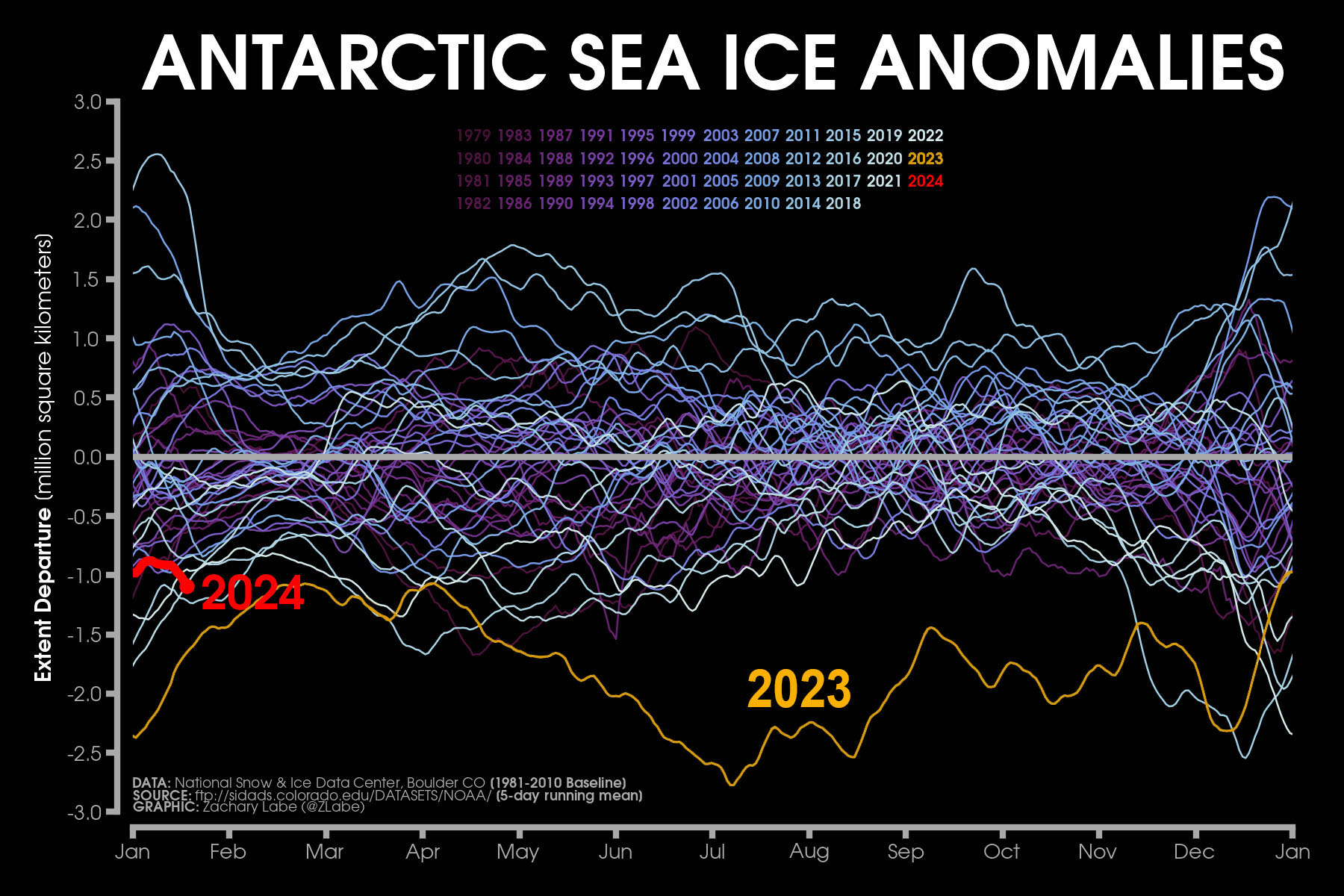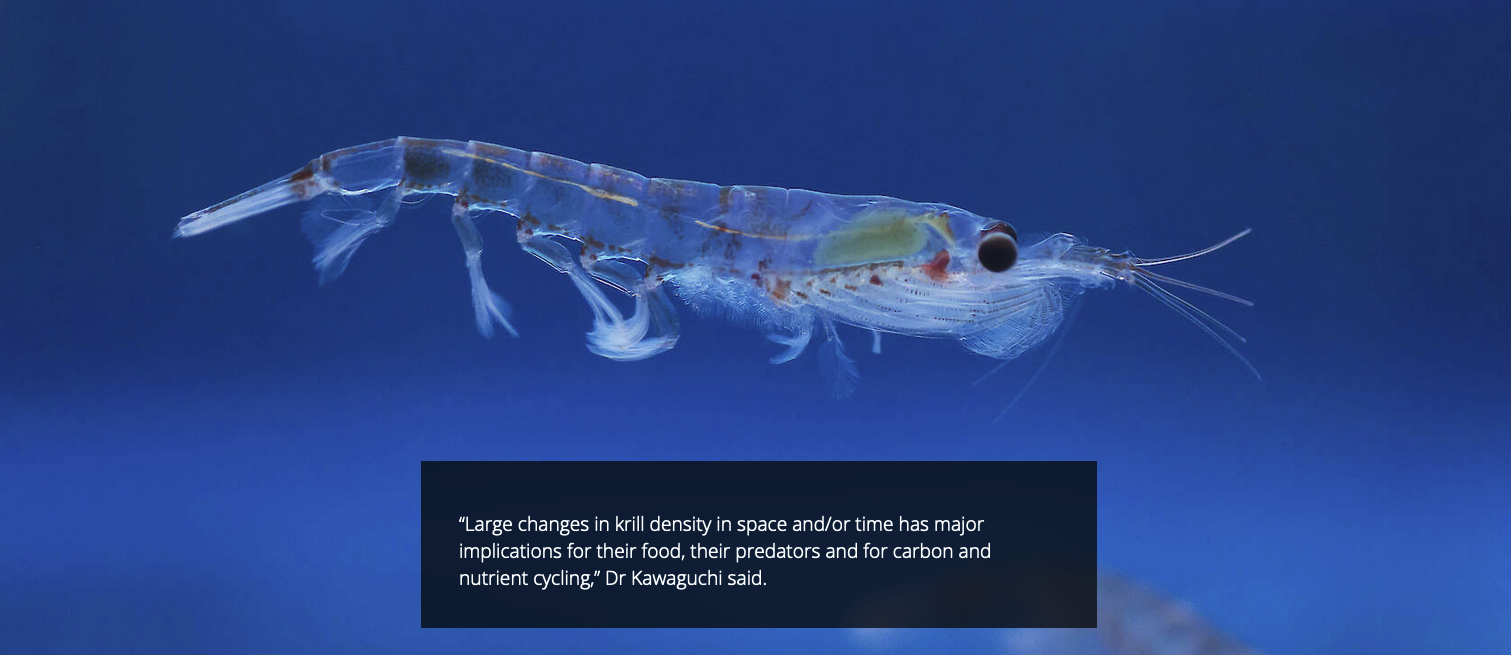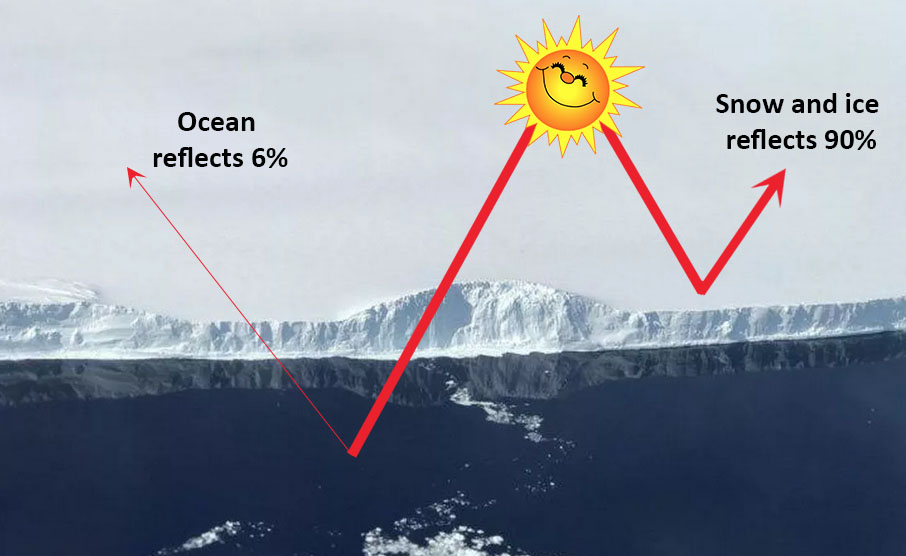The following is taken directly from ‘Copernicus Open Portal Sea Ice Extent’
“Antarctica is Earth’s coldest region and is home to the world’s largest mass of ice. Its surface size almost doubles each winter as sea ice forms around the coasts. This means its sea ice is usually only one-winter-old at most and is thinner and more vulnerable to warming seas and impacted wind patterns. Rising temperatures due to climate change are especially impacting the ice shelves on the outer edges of the continent. It hosts a region that is among the fastest warming regions on Earth, the Antarctic Peninsula, the part furthest from the South Pole.¹
“Ice is increasingly melting in the region, resulting in ice shelves (ice sheets attached to landmasses) breaking off and the glaciers that they hold back sliding towards the sea. The formation and movement of Antarctic sea ice is affected by changing wind, currents and longer-term climate patterns such as El Niño. Unlike Arctic sea ice, most Antarctic sea ice melts in the summer season and grows back in the astral winter, and it lacks the ‘melt-warm-melt’ feedback loop seen in the Arctic.
“Ice reflects a lot of sunlight back into space; as more ice melts, more sunlight is absorbed by the ocean rather than being reflected by the ice, which can further exacerbate ocean warming. Sea ice acts as a blanket insulating the relatively warm ocean from the cold air, so when it melts, it can impact many factors from ocean circulation to local ecosystems both in the water and on the ice. ”
High variability in Antarctic sea ice extent
“The response of Antarctic sea ice to climate change is complex, with high year-to-year variability, and the trend remains unclear. Until 2015, the region’s sea ice cover had slowly increased year-on-year since satellite records began. However, the three subsequent years saw losses, with 2017 having the lowest sea ice extent in nearly 30 years. From late 2014 to 2017, the Antarctic lost two million square kilometres of sea ice – an area equivalent to roughly four times that of Spain. 2018 saw a slight increase in total Antarctic sea ice extent.
“In mid-February 2023, the lowest levels of sea ice extent on satellite record were seen around Antarctica, which stood at just 2.06 million km2 (Fig. 2) This new record surpasses the previously unprecedented low of 2.17 million km2, observed on 19 February 2022. This ranks as the lowest sea ice extent in a 44-year data record. The sea ice coverage averaged over the entire February 2023 period represents a 13% loss in sea ice when compared to 2022, and a 38% loss when compared to the 1979–2022 average for the month of February.
“The current situation reflects a shift in sea ice patterns in the past decade, characterized by larger fluctuations across the entire continent compared to previous years. Before 2016, there was greater regional variability, with different parts of the Antarctic Ocean showing distinct positive or negative trends. These variations balanced each other out, resulting in a slight overall increase in Antarctic sea ice. However, since 2016, after a huge drop in sea ice extent, these regional differences have become insufficient to offset the more recent ongoing decline in sea ice extent.”

Why is Antarctic sea ice important?
“The Antarctic provides essential ecosystem and climate services that have global significance. These include (but are not limited to): driving ocean currents, transporting heat and nutrients, hosting a diverse range of species, and acting as major carbon sink. Moreover, the Antarctic ice sheet (on land) contains a vast amount of frozen water. Under certain climate scenarios, the region could release vast amounts of freshwater into the ocean and increase the global sea level dramatically.
“The Southern Ocean is the motor of global ocean circulation patterns. The frigid and saline waters in the vicinity of the Antarctic continent plunge to great depths within the ocean, propelling a conveyor-like circulation of heat, nutrients and oxygen across the globe. This same conveyor belt transports carbon from the atmosphere to the deep ocean, where it is stored for hundreds or even thousands of years. This makes the Southern Ocean one of the main carbon pumps in the world.
“As temperatures warm and the Antarctic ice melts, the input of fresh water (from land ice) can disrupt these currents and potentially alter regional and global climate patterns. Freshwater is less dense and an increase in this, low salinity, low density water could affect surface waters which would no longer sink, thus disrupting the thermohaline circulation. This can have far-reaching repercussions for ecosystems and humanity.
Ocean acidification in polar waters
“The unique characteristics of the polar waters, including those in the Antarctic, make them especially susceptible to ocean acidification. Firstly, the colder temperatures found in polar regions enhance the solubility of carbon dioxide (CO2) in water, leading to higher concentrations of dissolved CO2 and subsequent acidification. Secondly, polar waters naturally have low levels of calcium carbonate, a substance that helps buffer against acidity. The buffering capacity, which refers to the ability to resist changes in pH, is generally lower in polar waters. Moreover, there is a lot of upwelling in these regions, which brings deep CO2-rich waters to the surface.4
“These changes in the Southern Ocean’s physical and chemical properties can disrupt marine ecosystems and have cascading effects on the food web and biodiversity in the region. The Antarctic is home to unique and fragile ecosystems that support a variety of species that are impacted by these compound pressures and as a result biodiversity is declining. This has profound implications for the functioning of ecosystems and the services they provide, such as carbon storage and nutrient cycling. This in turn can impact human systems.”





